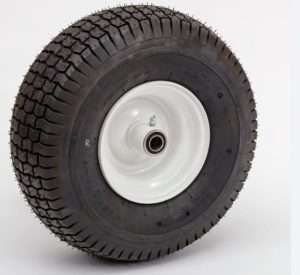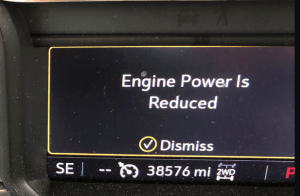Types of Lawn Mower tires
Ah, lawn mower tires. The unsung heroes of the grass-cutting world. They spin and roll and help us maintain our beautiful lawns. But did you know that not all lawn mower tires are created equal?
That’s right, my friend. There are a plethora of tire types out there just waiting to be discovered. So let’s dive in and explore the world of lawn mower tires, shall we?
Why Lawn Mower Tires Matter
Lawn mower tires are essential for a number of reasons:
- Traction: Good tires provide the necessary grip to keep your mower moving steadily across your lawn, regardless of the terrain.
- Maneuverability: Proper tires make it easier to navigate around obstacles and tight corners.
- Stability: Quality tires help maintain the stability of the mower, preventing it from tipping over or losing control.
- Comfort: The right tires can absorb bumps and vibrations, making your mowing experience more enjoyable.
Types of Lawn Mower Tires
There are several types of lawn mower tires to choose from, each with its own set of advantages and disadvantages.
Pneumatic Tires
Pneumatic tires are the most common type of lawn mower tire. They are filled with air and provide a smooth ride, excellent traction, and good shock absorption. Pneumatic tires come in two varieties:
Tubeless
Tubeless pneumatic tires do not require an inner tube. Instead, the tire is sealed directly to the wheel rim, which allows for better performance and easier maintenance. However, they are more prone to punctures and air leaks.
With Tubes
Tires with tubes have a separate inner tube that holds the air. This type of tire is less prone to air leaks, but changing a flat tire can be more challenging due to the need to replace or repair the inner tube.
Semi-Pneumatic Tires
Semi-pneumatic tires are a hybrid between pneumatic and solid rubber tires. They have air pockets within the tire material, providing some shock absorption and a smoother ride than solid rubber tires.
These tires are puncture-resistant but do not offer the same level of cushioning and traction as pneumatic tires.
Solid Rubber Tires
Solid rubber tires are made entirely of rubber and do not contain any air. They are air-less incredibly durable and puncture-resistant, making them an excellent choice for rough or debris-filled terrain.
However, their lack of air means they do not provide the same level of cushioning and shock absorption as pneumatic tires, which can result in a less comfortable mowing experience.
Additionally, solid rubber tires may not offer as much traction as their pneumatic counterparts, especially on wet or slippery surfaces.
Plastic Tires
Plastic tires are a more affordable option for lightweight, entry-level lawnmowers. They are made of hard plastic material and offer limited shock absorption and traction compared to other types of tires.
While they may be suitable for small, flat lawns, plastic tires are not recommended for use on uneven terrain or larger mowing projects due to their reduced durability and performance.
Factors to Consider
When selecting the right lawn mower tires, there are several factors to keep in mind:
Terrain
The type of terrain you’ll be mowing plays a significant role in determining the best tire for your needs. Pneumatic tires are suitable for most terrains, while solid rubber tires excel on rough or debris-filled surfaces. Plastic tires should be limited to flat, small lawns.
Tread Patterns
Tread patterns affect the tire’s traction and stability. Choose a tire with a tread pattern that matches your mowing needs, such as a turf-friendly pattern for delicate lawns or an aggressive pattern for rough terrain.
Weight Capacity
Ensure the tires you choose can support the weight of your lawn mower and any additional attachments or accessories. Overloading tires can lead to premature wear and potential failure.
Size and Compatibility
Make sure the tires you select are compatible with your lawn mower’s wheel size and mounting style. Consult your owner’s manual or contact the manufacturer for specific recommendations.
Conclusion
Choosing the right lawn mower tires is crucial for optimal performance and efficiency. By considering factors like terrain, tread pattern, weight capacity, and size compatibility, you can make an informed decision that will help you achieve a well-manicured lawn with ease.
Remember, investing in quality tires not only improves your mowing experience but also extends the life of your lawn care equipment.
FAQs On Types of Lawn Mower tires
Q: Can I use different types of tires on the front and rear wheels of my lawn mower?
A: Yes, some lawnmowers use different types of tires on the front and rear wheels to improve maneuverability and traction. Consult your owner’s manual or contact the manufacturer for specific recommendations.
Q: How often should I replace my lawn mower tires?
A: The frequency of tire replacement depends on the type of tire, usage, and terrain. Regularly inspect your tires for wear, damage, or reduced traction, and replace them as needed.
Q: Can I repair a punctured pneumatic tire?
A: Yes, small punctures in pneumatic tires can often be repaired using a tire sealant or patch kit. For larger punctures or damaged sidewalls, replacing the tire is recommended.
Q: Are there any special maintenance requirements for lawn mower tires?
A: Regularly check your tires for proper inflation, wear, and damage. Keep them clean, and store your lawn mower in a cool, dry place to prevent cracking and deterioration.
Q: Can I use off-road or ATV tires on my lawn mower?
A: While off-road or ATV tires may fit some lawnmowers, they are not specifically designed for lawn care equipment and may cause damage to your lawn or reduce mower performance. Always choose tires specifically designed



